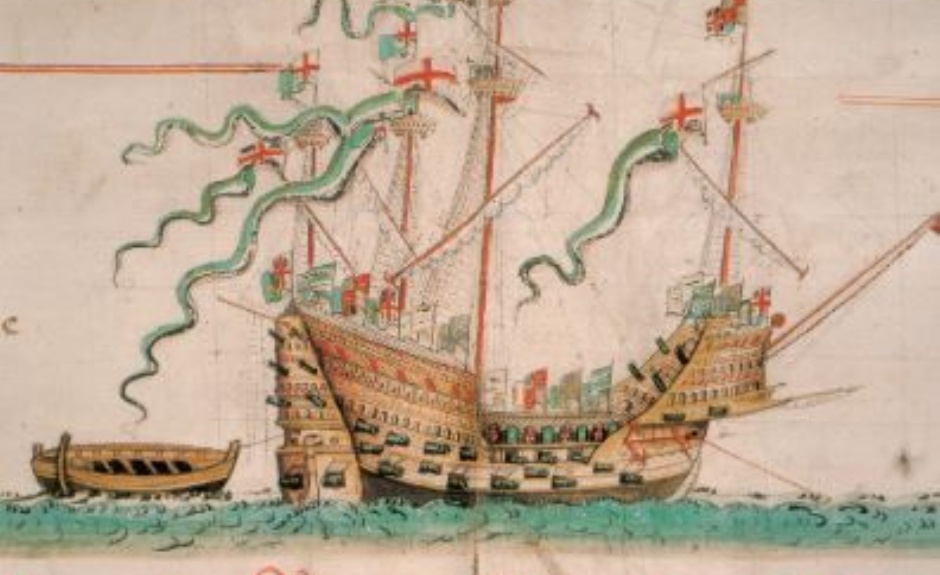Moments in Time

Tuesday this week saw a significant anniversary: 11 October marked 40 years since the raising of the Mary Rose. After 437 years on the bed of the Solent, Henry VII’s flagship returned to the surface.
It was a massive and very complicated operation, and an historically significant one too. The search for, and discovery of, the Mary Rose was a result of the dedication of one man, the late Alexander McKee. In 1965, in conjunction with the Southsea branch of the British Sub-Aqua Club, McKee initiated ‘Project Solent Ships’ to investigate wrecks in the Solent. His real hope was to find the Mary Rose. By using sonar scans, the team discovered a strange shape underneath the seabed. Alexander strongly suspected he had found his quest. Between 1968 and 1971, a team of volunteer divers explored the area. Using dredgers, water jets and airlifts, they began to excavate and were encouraged by the appearance of stray pieces of timber. The climax came when diver Percy Ackland found three of the port frames of the Mary Rose on the 5th May 1971.
What followed was a ten year operation to salvage and preserve the Mary Rose. Of course the tale didn’t end there, and it has taken nearly 40 years to painstakingly dry out and conserve the remains, sort through all the artefacts, and finally build a museum around the ship – the Mary Rose Museum only opened its doors in its current and final form in 2016 (if you haven’t been, you must – it is superb and beautifully done).
However, what this anniversary reminded me of was the memory of being a 6-year-old (yes, that is one mystery solved) and being allowed by my mother to go in late to school so that I could watch the first part of the raising (which started at 0700 and took many hours). I must make clear that I was NEVER allowed to miss school [my mum denies it, and it may be my memory playing tricks, but I’m sure she said on more than one occasion: “if you’re not bleeding and you can walk, you can go to school”!], and so to say that it was a special event is an understatement. It was so exciting seeing history unfold in front of my young eyes; I was amazed and awe inspired. It was the ‘event TV’ nature of it that still sticks in my mind to this day.
These 'moments in time' are culturally significant; they bind us together and help us to see our lives in the context of history. Older generations often ask “where were you when you heard JFK had been shot?”, or “do you remember the moon landing?”. Those of a similar age to me might also recall the raising of the Mary Rose or remember everyone asking the question “who shot JR?”. Watercooler TV, I believe they call it. For our young Pilgrims, the more recent events surrounding the death of the Queen will be their first-hand shared experience of history and I hope they will remember it for the rest of their lives. Shared experience is important, although the relevance of it might only come to you later in life. Some call these things ‘Cultural Capital’, and American writer E.D. Hirsch wrote a lot about Cultural Literacy (something I may expand upon in future articles). It is my view that sharing these 'moments in time' is very important in helping us understand the world around us and collectively should encourage us to build on what has gone before; after all, we do indeed all stand on the ‘Shoulders of Giants’ (which interestingly has been attributed to many thinkers, not just Isaac Newton!).
Alistair Duncan
Interim Head
[As an aside, in research for this article I found a quote from Prince Charles, who was president of the Mary Rose Trust in 1982, and who spoke about a moment when one of the pins holding the lifting frame sheared, a steel line snapped and part of the 80 tonne frame smashed down on the hull. His response: "I was slightly horrified but I thought the best thing to do was to be British and not panic." Marvellous!]








